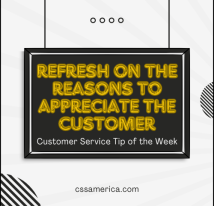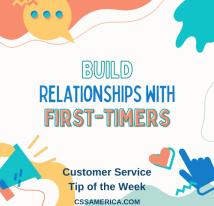 Everybody sing with me: Feelings, whoa whoa whoa, feelings…
Everybody sing with me: Feelings, whoa whoa whoa, feelings…
Excellent old song, and be thankful that I’m just writing the words and not singing to you. While not all of us are comfortable with discussing feelings, feelings are an important part of the customer experience.
No, you can’t make someone feel a certain way, but there are things you can do or say that help to engender certain kinds of feelings. That’s why we talk about conveying appreciation for the customer, so they will hopefully feel valued and important.
You also want customers to feel comfortable with your business and confident in their experience with you. You want them feeling positively about the relationship. Much of their perceptions about you and your organization, much of their decision-making about whether to stick with your company is about their feelings.
To build their comfort and confidence, consider encouraging your customers (as well as your co-workers). Encourage them for what they’ve done: You’ve made great progress. OR I’m impressed with what you’ve done.
Encourage them for what they will do: Thanks for moving this forward. OR Thanks for taking leadership on this item.
Encourage them for who they are: I appreciate your great attitude and energy. OR I appreciate you bringing so many productive ideas to us!
To engender positive feelings, encourage the customer.
Signup for FREE Tips! Contact Us More Resources for You Visit Our Home Page














 “I just want to be heard.”
“I just want to be heard.” Here are 3 customer service scenarios for a college IT department:
Here are 3 customer service scenarios for a college IT department:






